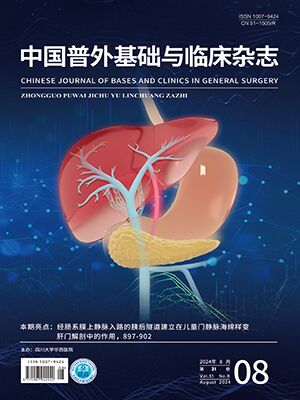【Abstract】 Objective To study liver regeneration of the non-ligated liver lobes following portal branch ligation (PBL). Methods Sixty male Wistar rats were randomly divided into PBL group and sham operation (SO) group. Under ether anesthesia, the rats were subjected to PBL and sham operation, respectively. The animals were sacrificed on the 1st, 2nd, 3rd, 7th and 14th day respectively. The blood sample was collected from heart and the livers were harvested to determine serum alanine aminotransferase (ALT) levels and total liver weight, respectively. The hepatic histopathology was studied through light microscopy. The number of liver cell nuclear mitosis index was counted. The number of proliferative cell nuclear antigen (PCNA) index was counted by immunohistochemistry. The hepatic ultrastructural changes were studied under electron microscope. Results ①Elevated serum ALT level was observed in the first postoperative day in PBL group compared with SO group (P<0.01), but began to recover in the second day. ②No significant total liver weight change in PBL group and SO group were found. ③Liver cell nuclear mitosis index and PCNA index were markedly increased in PBL group compared with SO group in day 1-3 postoperative day (P<0.01). It reached the peak in the second day and decreased slightly in the 3rd day, but still higher than SO group, then gradually return to normal lately. Conclusion The ligation of left portal branch can induce active regeneration of hepatic cell of non-ligated liver lobes in rats. The regeneration of non-ligated liver lobes may restore previous total liver weight. The ligation of 75% portal branch does not affect liver function and may be safely performed. The portal branch ligation in rats may be used as an animal model in study of liver regeneration.
Citation: GUO Meixiang,GAO Lihua,LIU Libo,MENG Zhaohua,GONG Xiumei.. Experimental Study on Liver Regeneration Following Portal Branch Ligation in Rats. CHINESE JOURNAL OF BASES AND CLINICS IN GENERAL SURGERY, 2006, 13(5): 550-554. doi: Copy




